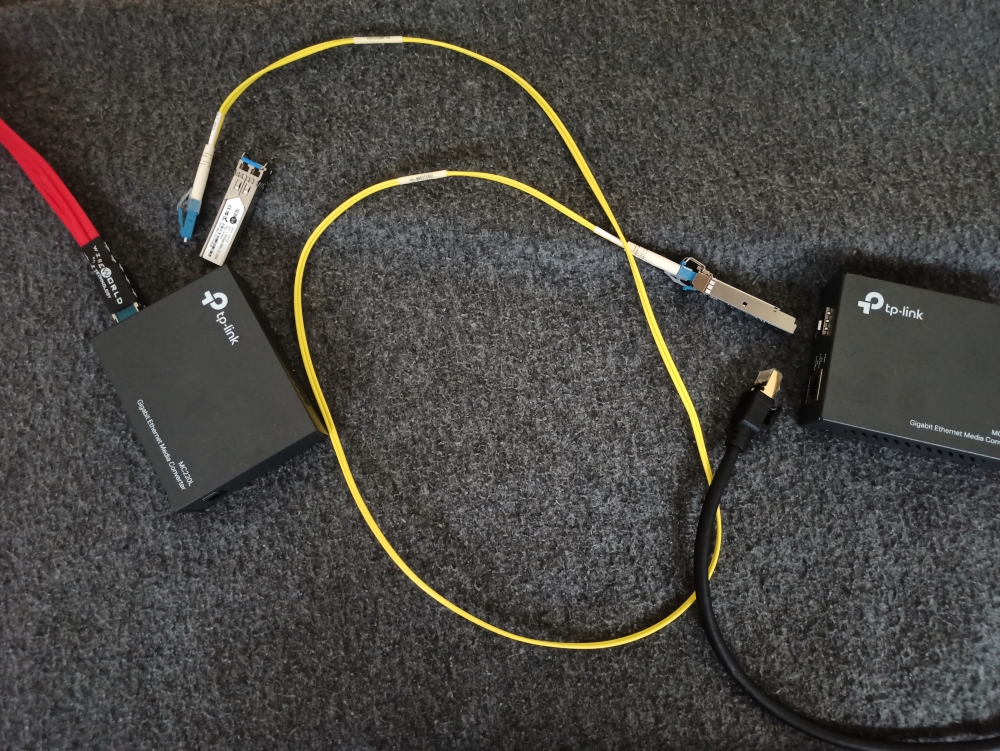
By Lam Seng Fatt
In the Year of the Rabbit, please allow me to invite all Malaysian audiophiles who use streamers to jump into the rabbit hole of fibre optic networks.
I have been exploring fibre optic connections ever since I reviewed the Lumin P1 streamer/DAC/preamp which is one of the few components in the market which offers a Fibre Network connection (see https://www.av2day.com/2023/01/lumin-p1-is-streaming-via-fibre-network-the-best-way/ and https://www.av2day.com/2023/01/do-optical-fibre-cables-sound-different/).
From the outset I have to state that the method I use is not invented by me. While googling to research the subject of SFP connections for the Lumin review, I came across this method which other audiophiles have tried before and I decided to try it and found out that it works very well and would like to introduce it to Malaysian audiophiles. And it is not expensive at all.
You need two TP-Link MC220L Gigabit Ethernet Media Converters (RM215 each) https://shopee.com.my/TP-LINK-GIGABIT-TO-SFP-MEDIA-CONVERTER-(MC220L)-i.44569675.1562745263 and two SUBTel SFP-1G-LX 1.25G 10km SFP Transceiver modules Singlemode SMF Fiber (commercial grade, generic firmware, RM61 each) https://shopee.com.my/SUBTel-SFP-1G-LX-1.25G-10km-SFP-Transceiver-module-Singlemode-SMF-Fiber-i.76579217.5101352140 The Molex fibre optic cable at RM49.15 from Element14 completes the system. https://my.element14.com/molex/885371501/fibre-optic-cable-lc-lc-duplex/dp/3884587 Inclusive of mailing, the total cost is RM611.65 which is less than the price of entry-level interconnects.
The unique feature of the TP-Link MC220L media converter is that it can convert ethernet to optical and optical back to ethernet.
With this optical ‘bridge’, you can benefit from the advantages of optical transmission even if your streamer/DAC/preamp or network media transport does not have a Fibre Network input like the Lumin, which amounts to perhaps 95% or more of all streamer/DAC/preamps and digital transports in the market.
With the optical ‘bridge’ you will get a very low noise floor and a pure and pristine sound quality. I believe the streamed digital data reaching the streamer/DAC would be as pure and clean as can ever be achieved. The sound quality will then depend on the quality and characteristics of your DAC.
Those who have invested in audiophile network switches, ethernet filters and audiophile ethernet cables would not have wasted their hard-earned money because they can still be used in the streaming network incorporating fibre optics.
In my system, I first set it up this way:
Wi-fi router –> Cat 8 cable –> Silent Angel Bonn N8 audiophile network switch –> Wireworld Starlight 8 ethernet cable –> TP-Link MC220L media converter –> SUBTel SFP transceiver –> Molex fibre optic cable –> SUBTel SFP transceiver –> TP-Link MC220L media converter –> Cat 8 cable –> Silent Angel Munich M1T network media transport –> iFi iSilencer+ –> Shunyata Omega USB cable –> iFi iPurifier3 –> iFi ZEN DAC.
With this set-up, the low noise floor and the pristine sound quality were there, but the music sounded a bit constricted. So I decided to switch the Wireworld Starlight 8 ethernet cable from before the optical ‘bridge’ to after it. I set it up this way:
Wi-fi router –> Cat 8 cable –> Silent Angel Bonn N8 audiophile network switch –> Cat 8 cable –> TP-Link MC220L media converter –> SUBTel SFP transceiver –> Molex fibre optic cable –> SUBTel SFP transceiver –> TP-Link MC220L media converter –> Wireworld Starlight 8 ethernet cable –> Silent Angel Munich M1T network media transport –> iFi iSilencer+ –> Shunyata Omega USB cable –> iFi iPurifier3 –> iFi ZEN DAC.
This way the music sounded much better and not constricted at all. The sound was open and clear and the images were better defined and separated. Noise floor was very low and the music sounded pure and pristine. I think with this streaming method, the sound quality would be determined by the quality of the ethernet cable after the second TP-Link media converter, the USB cable and the DAC. If you have a streamer/DAC or streamer/DAC/preamp, then the USB cable is out of the equation. I feel you should use the best ethernet cable that you have after the second TP-Link media converter i.e. after the optical ‘bridge’. If I have the money, I would use another audiophile ethernet cable to connect from the audiophile network switch to the first TP-Link media converter.
To end this article, I shall repost some advice from audiophile Jules Ang who posted these on Facebook: (1) The user should always clean the ferrule tips with alcohol before plugging into the intended optical receptacle. (2) Applying a small amount of optical gel on the ferrule tips can help improve sound by maintaining consistency in refractive index between any two optical connections. He added that fibre optic cables can be directional due to “subtle differences in finishing on the ferrule tips, and leading to micro variations in the way light exits from the cable”.
So I wish you all happy experimenting in the rabbit hole of fibre optical networks.
